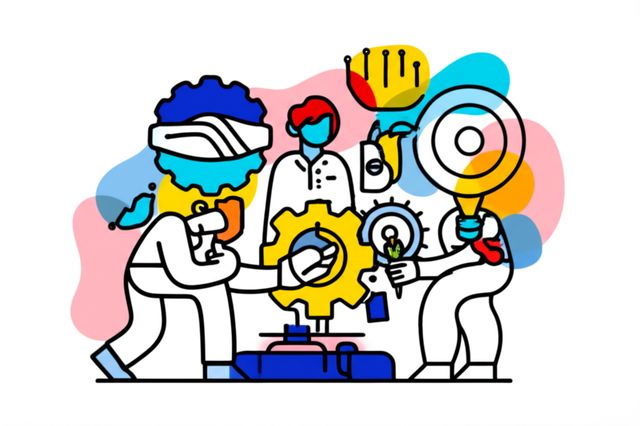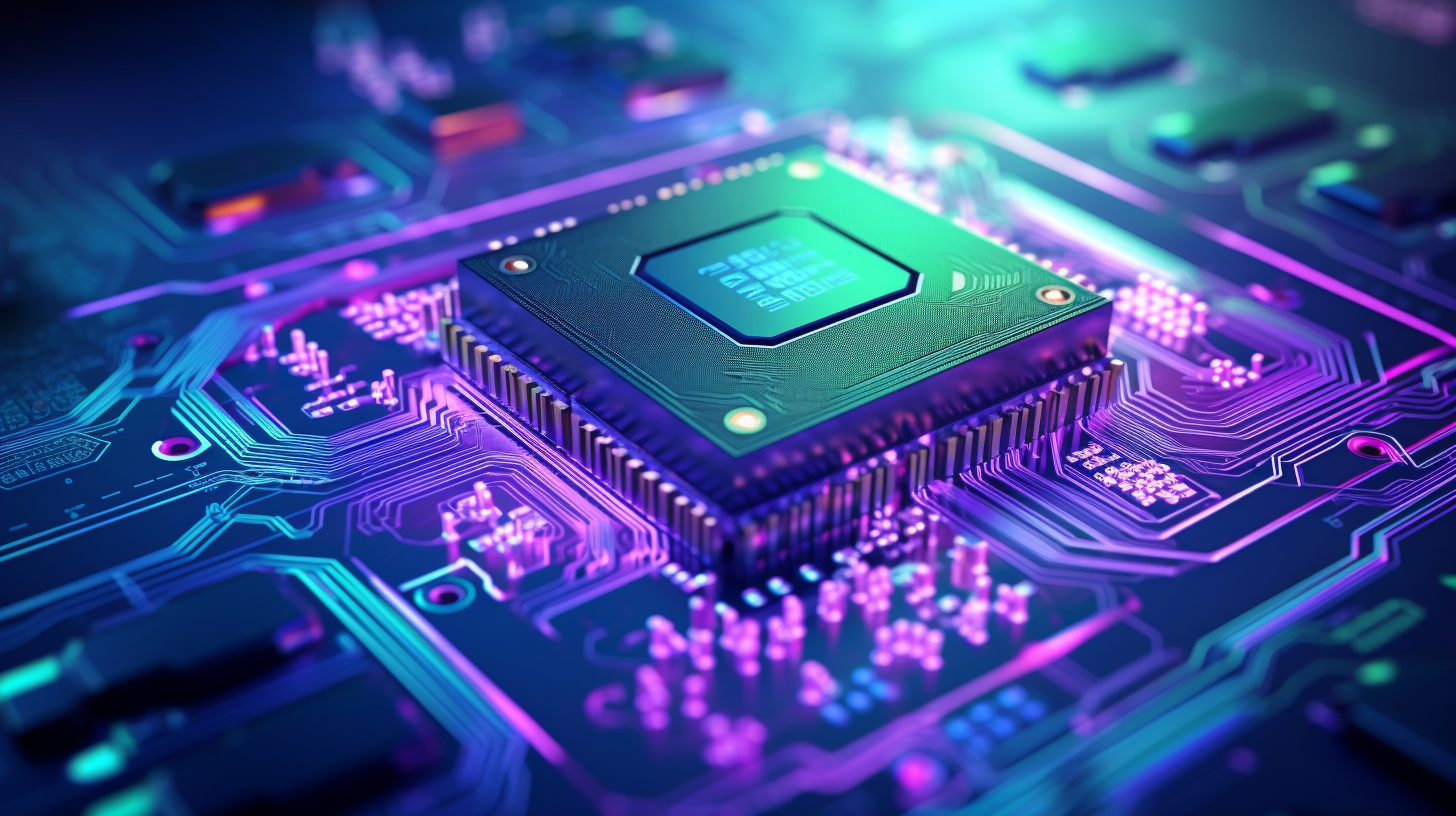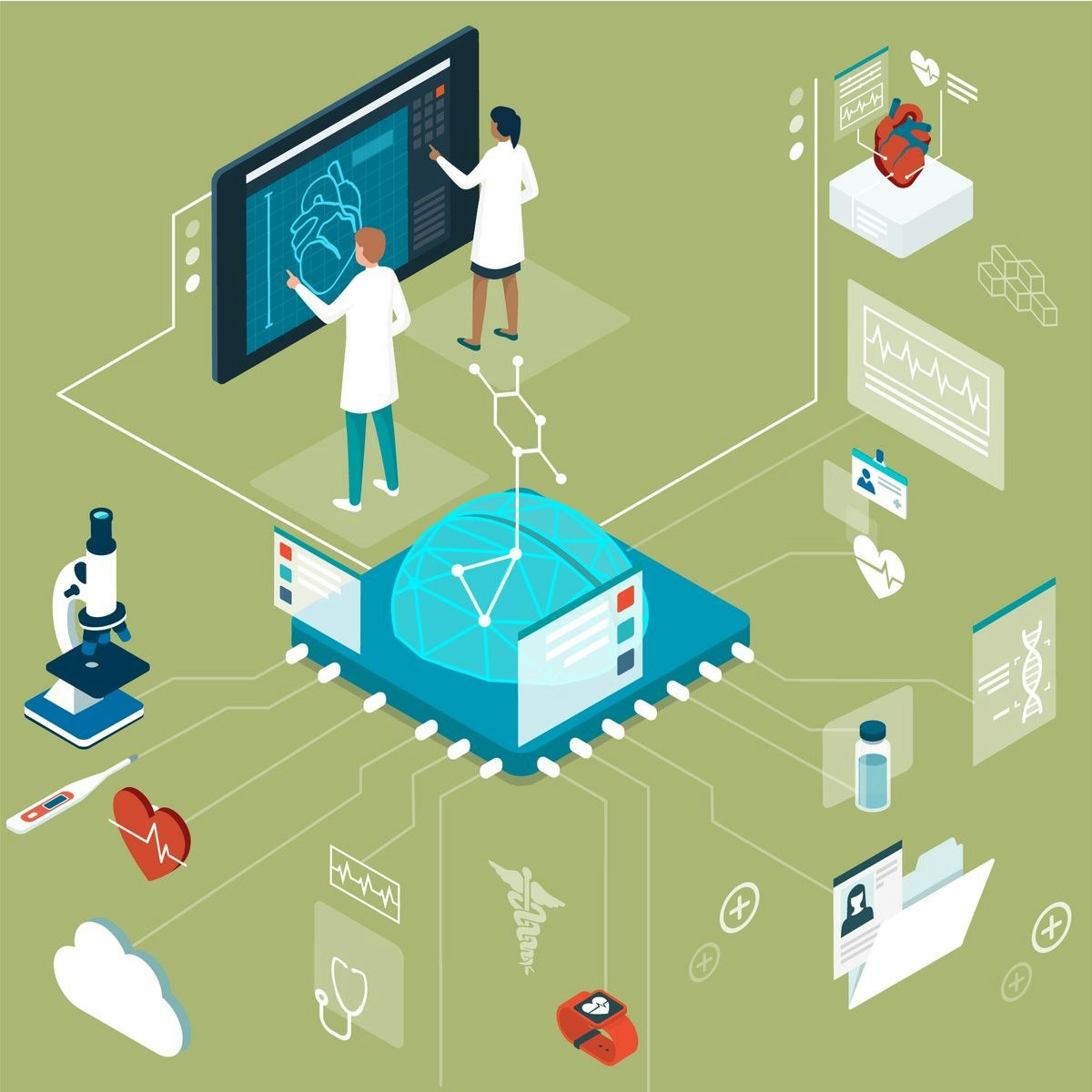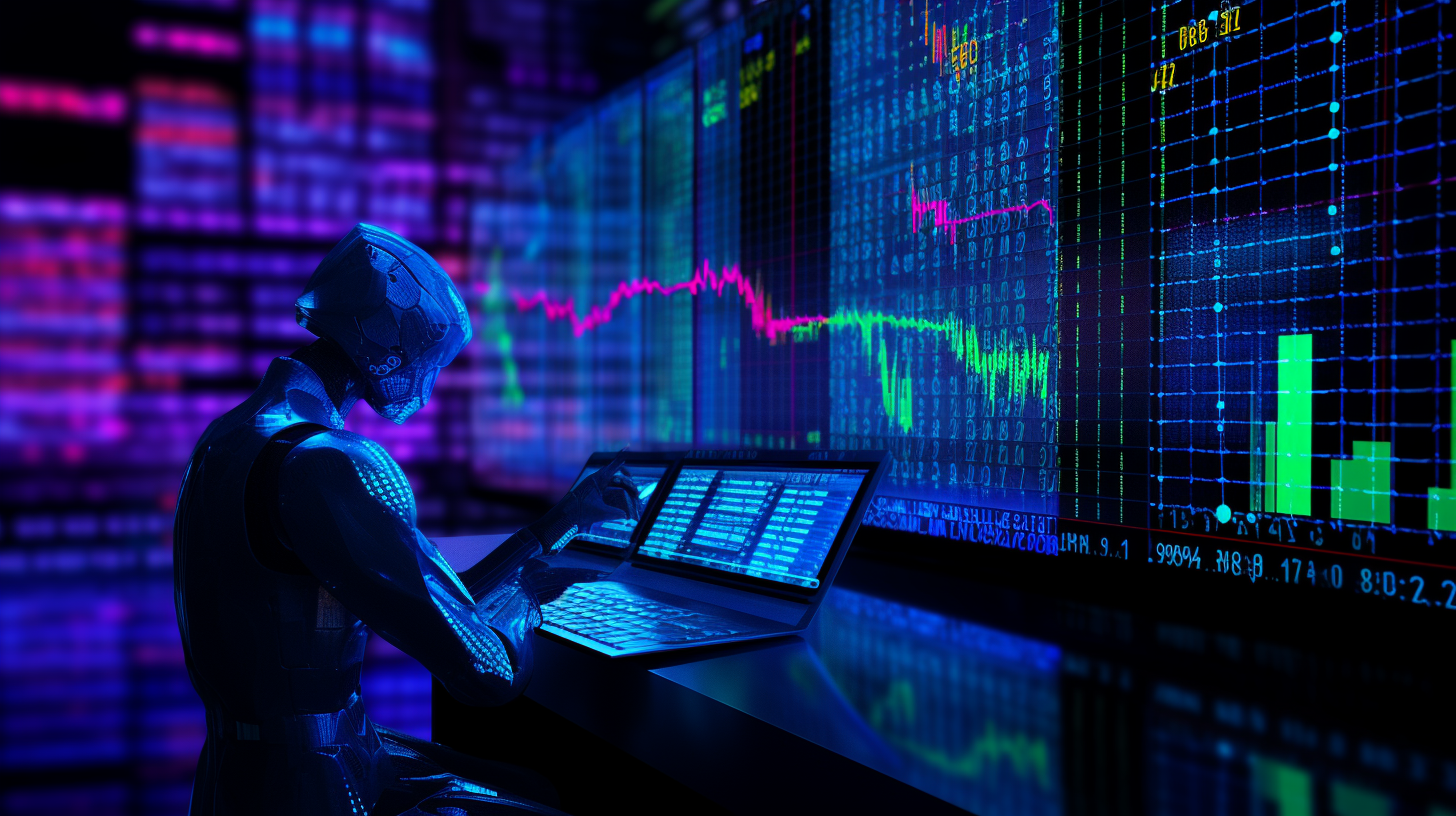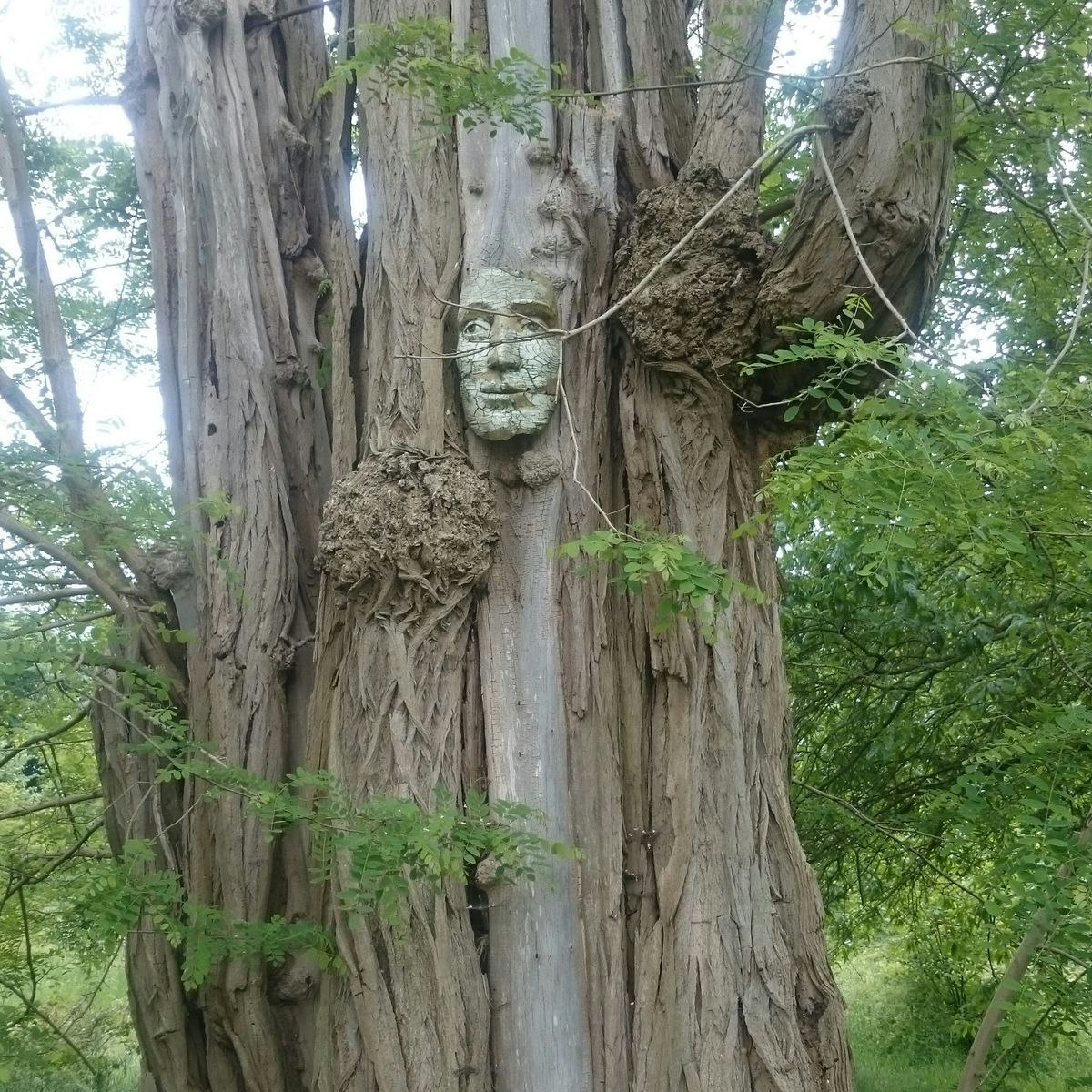Machine Learning Algorithms
Comprehensive Guide to Machine Learning Algorithms
Machine learning algorithms are at the core of a rapidly evolving field in computer science. At a high level, machine learning involves developing systems that can learn from and make decisions or predictions based on data, without being explicitly programmed for each specific task. This is a departure from traditional programming, where developers provide explicit instructions for every action a program takes. Instead, machine learning algorithms are designed to identify patterns, learn from observations, and improve their performance over time as they are exposed to more data.
The power of machine learning algorithms lies in their ability to analyze vast amounts of data and extract meaningful insights, leading to applications that can transform industries. Imagine computer systems that can help diagnose diseases with remarkable accuracy, financial models that predict market fluctuations, or customer service bots that understand and respond to your queries in natural language. These are just a few examples of the engaging and exciting aspects of working with machine learning algorithms. The field is constantly pushing the boundaries of what's possible, offering a dynamic and intellectually stimulating environment for those who are curious and driven to solve complex problems.
What are Machine Learning Algorithms?
Machine learning algorithms are sets of rules or instructions that enable computer systems to learn from data. Think of them as the engines that power artificial intelligence. Instead of a programmer writing code for every possible scenario, these algorithms are "trained" on large datasets. During this training process, the algorithm identifies patterns and relationships within the data. Once trained, the algorithm can then be used to make predictions or decisions on new, unseen data. The more data an algorithm is trained on, and the better the quality of that data, the more accurate its predictions and decisions tend to become.
This capability to learn and adapt is what distinguishes machine learning from traditional programming. Traditional programs follow a predetermined set of instructions, and their behavior is fixed unless a programmer manually changes the code. Machine learning algorithms, however, are designed to evolve. As they encounter new data, they can refine their understanding and improve their performance on the task they were designed for. This adaptability makes them incredibly powerful for tackling complex problems where the underlying patterns might be too intricate for humans to define explicitly or where the patterns change over time.
A Brief History and Core Ideas
The foundational ideas of machine learning can be traced back to the mid-20th century. Early concepts explored the possibility of computers learning from experience. Alan Turing, a pioneer in computer science, proposed the "Turing Test" in 1950 to determine if a machine could exhibit intelligent behavior indistinguishable from that of a human. Around the same time, Arthur Samuel, an American pioneer in the field of computer gaming and artificial intelligence, coined the term "machine learning" in 1959 and created a checkers-playing program that could learn from its mistakes and improve its gameplay over time.
The development of machine learning has been closely intertwined with advancements in statistics, mathematics, and computer science. Key concepts like probability, linear algebra, and optimization algorithms form the mathematical bedrock upon which machine learning techniques are built. In the following decades, researchers developed various algorithms and theoretical frameworks. The advent of more powerful computers and the availability of vast amounts of digital data in recent years have significantly accelerated the progress and practical application of machine learning algorithms across numerous domains.
Today, machine learning encompasses a wide array of techniques and approaches, constantly evolving with new research and discoveries. It's a field driven by the quest to create more intelligent and autonomous systems.
Traditional Programming vs. Machine Learning: Key Differences
The fundamental difference between traditional programming and machine learning lies in how they approach problem-solving and how systems arrive at solutions.
In traditional programming, a developer explicitly writes a set of instructions (an algorithm) that tells the computer exactly what to do with the input data to produce an output. The logic is predefined by the programmer. For example, to write a program that converts Celsius to Fahrenheit, a programmer would explicitly code the formula: Fahrenheit = (Celsius * 9/5) + 32. The program will always follow this rule. If the requirements change, a programmer needs to manually update the code.
In machine learning, the approach is different. Instead of providing explicit instructions, developers feed the system a large amount of data (input and corresponding desired output for supervised learning) and allow an algorithm to learn the patterns and relationships between the input and output. The algorithm "learns" a function or model from the data. For instance, to build a spam email filter using machine learning, you would provide the algorithm with many emails already labeled as "spam" or "not spam." The algorithm would then learn to identify characteristics associated with spam emails. The decision-making process is data-driven rather than explicitly programmed for every specific rule. Machine learning models can also adapt to new data without requiring manual reprogramming for every new scenario.
Another key difference is the development process. Traditional programming often follows a more linear and predictable path of implementing and debugging predefined logic. Machine learning development is typically more iterative and experimental, involving training, evaluating, and fine-tuning models. Furthermore, while the logic in traditional programs is generally transparent, some machine learning models, especially complex ones like deep neural networks, can act as "black boxes," making it challenging to understand precisely how they arrive at a particular decision.
Real-World Impact Across Industries
Machine learning algorithms are no longer confined to research labs; they are making a significant impact across a multitude of industries. Businesses are increasingly leveraging machine learning to enhance efficiency, gain insights from data, and create innovative products and services. The global machine learning market has seen substantial growth and is projected to continue its upward trajectory.
In healthcare, machine learning is used for tasks like diagnosing diseases from medical images, predicting patient outcomes, personalizing treatment plans, and even accelerating drug discovery.
The finance sector employs machine learning for algorithmic trading, fraud detection, credit scoring, and risk management.
In retail, machine learning powers recommendation engines that suggest products to customers, optimizes inventory management, personalizes marketing campaigns, and helps in understanding customer behavior.
The manufacturing industry utilizes machine learning for predictive maintenance to anticipate equipment failures, quality control, and optimizing supply chains and production processes.
Technology companies heavily rely on machine learning for search engines, spam filters, speech recognition, natural language processing, and powering virtual assistants.
Furthermore, machine learning is driving advancements in areas like transportation (with self-driving cars), agriculture (for crop yield prediction and resource management), and energy (for optimizing energy consumption). The ability of machine learning algorithms to analyze complex data and make predictions is transforming how businesses operate and innovate.
For those interested in the broader field of Data Science which heavily utilizes machine learning, OpenCourser offers a dedicated browse page for Data Science courses.
Types of Machine Learning Algorithms
Machine learning algorithms are broadly categorized based on how they learn from the data. The main types are Supervised Learning, Unsupervised Learning, and Reinforcement Learning. Some also categorize Semi-Supervised Learning as a distinct type, which combines elements of both supervised and unsupervised approaches.
Supervised Learning
Supervised learning is perhaps the most common type of machine learning. In supervised learning, the algorithm is trained on a dataset where the input data is "labeled" with the correct output. Think of it like a student learning with a teacher who provides examples and the correct answers. The algorithm's goal is to learn a mapping function that can take new, unseen input data and predict the correct output.
There are two main categories of supervised learning tasks:
- Classification: In classification, the output variable is a category, such as "spam" or "not spam," or "cat," "dog," or "bird." The algorithm learns to assign new data points to one of these predefined classes. Examples of classification algorithms include Logistic Regression, Support Vector Machines (SVM), Decision Trees, Random Forests, and K-Nearest Neighbors (KNN).
- Regression: In regression, the output variable is a continuous numerical value, such as the price of a house, the temperature tomorrow, or the stock price. The algorithm learns to predict this continuous value based on the input features. Linear Regression is a fundamental regression algorithm. Decision Trees and Random Forests can also be used for regression tasks.
Supervised learning is used in a wide variety of applications, including image recognition, medical diagnosis, fraud detection, and predicting customer churn.
These courses provide a solid introduction to supervised learning concepts and their applications.
For those looking to delve deeper into the mathematical underpinnings, which are crucial for a thorough understanding, this book is a valuable resource.
ELI5: Supervised Learning
Imagine you're teaching a toddler to identify different fruits. You show them an apple and say, "This is an apple." You show them a banana and say, "This is a banana." You do this many times with different apples and bananas (your labeled training data). The toddler (the algorithm) starts to learn the features of an apple (round, red or green, has a stem) and a banana (long, yellow, curved). After enough examples, if you show the toddler a new fruit they haven't seen before, they can look at its features and make a good guess whether it's an apple or a banana. That's supervised learning! The "supervision" comes from you telling the toddler the correct label for each fruit during the learning process.
If you're trying to teach the toddler to guess how many cherries are in a bowl (a number, not a category), that would be like regression. If you're teaching them to say whether a fruit is an apple, banana, or orange (a category), that's classification.
Unsupervised Learning
In unsupervised learning, the algorithm is given input data without any explicit output labels. The goal is for the algorithm to explore the data and find some structure or patterns on its own. It's like giving someone a box of mixed Lego bricks and asking them to sort them into groups based on similarity, without telling them what the groups should be.
Common unsupervised learning tasks include:
- Clustering: This involves grouping data points that are similar to each other. For example, clustering customers based on their purchasing behavior to identify different market segments. K-Means is a popular clustering algorithm.
- Dimensionality Reduction: This aims to reduce the number of variables (features) in a dataset while preserving important information. This can be useful for simplifying data, improving the performance of other machine learning algorithms, and visualizing high-dimensional data. Principal Component Analysis (PCA) is a common dimensionality reduction technique.
- Association Rule Mining: This technique discovers interesting relationships or associations among variables in large datasets. For example, finding that customers who buy bread also tend to buy butter.
Unsupervised learning is valuable for exploratory data analysis, anomaly detection (finding unusual data points), and data compression.
These courses offer a good starting point for understanding unsupervised learning techniques.
ELI5: Unsupervised Learning
Imagine you have a big pile of different kinds of toys, but none of them have labels. You ask your friend (the algorithm) to sort them into groups. Your friend might look at the toys and decide to put all the red toys together, all the blue toys together, and all the green toys together. Or, they might put all the soft toys in one pile and all the hard toys in another. They are finding patterns and creating groups without you telling them beforehand what the groups should be (no labels). That's unsupervised learning. The computer looks for similarities or structures in the data all by itself. For example, a streaming service might use unsupervised learning to group users with similar viewing habits, even if it doesn't initially know what those "groups" of viewers look like. This helps them recommend new shows you might like.
Reinforcement Learning
Reinforcement learning is a type of machine learning where an agent learns to make decisions by performing actions in an environment to achieve a goal. The agent receives feedback in the form of rewards or penalties based on its actions. It's like training a dog: when the dog performs a desired trick (action), it gets a treat (reward), and when it does something undesirable, it might get a gentle scolding (penalty). The goal of the agent is to learn a strategy (called a policy) that maximizes its cumulative reward over time.
Reinforcement learning is different from supervised learning because it doesn't rely on labeled input/output pairs. Instead, the learning process is based on trial and error. The agent explores the environment, tries different actions, and learns from the consequences. This approach is particularly well-suited for problems where the optimal sequence of actions is not known, or where the environment is dynamic and changes over time.
Applications of reinforcement learning include training robots to perform tasks, developing game-playing AI (like AlphaGo), optimizing resource management in complex systems, and creating self-driving car navigation systems.
This course provides an introduction to the concepts of reinforcement learning.
This book is a highly regarded text in the field of reinforcement learning, offering a comprehensive theoretical foundation.
ELI5: Reinforcement Learning
Imagine you're teaching a robot to navigate a maze to find a piece of cheese (the reward). The robot (the agent) doesn't know the way at first. It tries moving in different directions (actions). If it moves closer to the cheese, you give it a "point" (positive reward). If it bumps into a wall, it gets a "minus point" (penalty). The robot wants to get as many points as possible. So, it learns over many tries which moves lead to points and which lead to minus points. Eventually, it figures out the best path through the maze to get the cheese. That's reinforcement learning! The robot learns by trying things out and getting feedback, aiming to maximize its total reward.
Deep Learning and Neural Networks
Deep learning is a specialized subfield of machine learning that utilizes artificial neural networks with multiple layers (hence "deep") to learn complex patterns from large amounts of data. Neural networks are inspired by the structure and function of the human brain, with interconnected nodes or "neurons" that process information.
Each layer in a deep neural network learns to represent features of the data at different levels of abstraction. For example, in image recognition, the initial layers might learn to detect simple edges and corners, subsequent layers might learn to identify more complex shapes and textures, and the final layers might learn to recognize objects like faces or cars. This hierarchical feature learning capability allows deep learning models to achieve state-of-the-art performance on many challenging tasks, such as image and speech recognition, natural language processing (like translation and text generation), and playing complex games.
Popular deep learning frameworks include TensorFlow and PyTorch, which provide tools and libraries for building and training neural networks. While incredibly powerful, training deep learning models often requires significant computational resources and large datasets.
The following courses offer insights into deep learning and neural networks.
If you're interested in the intersection of deep learning and programming, this topic might appeal to you.
Applications of Machine Learning Algorithms
The versatility of machine learning algorithms has led to their adoption in a vast array of applications, transforming industries and creating new possibilities. From improving healthcare outcomes to powering autonomous vehicles, machine learning is at the forefront of technological innovation.
Healthcare Diagnostics and Personalized Medicine
In the healthcare sector, machine learning algorithms are making significant strides in improving patient care. They are used to analyze medical images like X-rays, CT scans, and MRIs to detect diseases such as cancer or diabetic retinopathy, often with an accuracy comparable to or even exceeding human experts. Machine learning models can also predict the likelihood of a patient developing certain conditions based on their medical history, genetic information, and lifestyle factors, enabling early intervention and preventative care.
Personalized medicine is another exciting application, where machine learning helps tailor treatments to individual patients. By analyzing a patient's unique biological data and treatment responses, algorithms can help doctors choose the most effective therapies with the fewest side effects. Furthermore, machine learning is accelerating drug discovery by identifying potential drug candidates and predicting their efficacy, significantly reducing the time and cost associated with developing new medicines.
This course provides an introduction to how AI and machine learning are applied in healthcare.
For further reading on this topic, these books explore the intersection of machine learning and healthcare.
Financial Forecasting and Algorithmic Trading
The financial industry heavily relies on machine learning for a variety of tasks aimed at improving efficiency, managing risk, and identifying investment opportunities. Machine learning algorithms are adept at analyzing vast amounts of historical market data, news sentiment, and economic indicators to forecast stock prices, market trends, and volatility. This information is invaluable for investment decision-making.
Algorithmic trading, where computers execute trades at high speeds based on pre-programmed instructions or learned strategies, is another prominent application. Machine learning models, particularly reinforcement learning, can develop and optimize trading strategies by learning from market interactions. Additionally, machine learning plays a crucial role in fraud detection, identifying suspicious transaction patterns that might indicate fraudulent activity, and in credit scoring, assessing the creditworthiness of loan applicants by analyzing various financial data points.
These courses delve into the application of machine learning in finance and trading.
The following book provides insights into using machine learning for factor investing.
Natural Language Processing in Customer Service
Natural Language Processing (NLP), a branch of artificial intelligence that deals with the interaction between computers and humans using natural language, heavily utilizes machine learning algorithms. In customer service, NLP-powered machine learning models are transforming how businesses interact with their customers. Chatbots and virtual assistants, for example, can understand customer queries, provide instant responses to frequently asked questions, guide users through troubleshooting steps, and even escalate complex issues to human agents when necessary.
Machine learning algorithms are also used for sentiment analysis, where they analyze customer feedback from various sources like social media, reviews, and surveys to gauge customer satisfaction and identify areas for improvement. By automatically categorizing and routing customer inquiries, machine learning helps streamline customer support operations, reduce response times, and enhance the overall customer experience. This not only improves efficiency but also allows human agents to focus on more complex and nuanced customer interactions.
Consider these resources if you are interested in how machine learning powers language understanding.
Autonomous Systems and Robotics
Machine learning is a cornerstone technology for the development of autonomous systems and robotics. Self-driving cars, for instance, use a combination of machine learning techniques, including computer vision (to interpret their surroundings from camera and sensor data) and reinforcement learning (to make driving decisions like steering, accelerating, and braking). These systems are trained on vast amounts of driving data to learn how to navigate roads safely and efficiently.
In robotics, machine learning enables robots to learn new tasks, adapt to changing environments, and interact more intelligently with humans and their surroundings. This includes applications in manufacturing (robots performing assembly tasks), logistics (autonomous drones and warehouse robots), healthcare (robotic surgery assistants), and even exploration (robots navigating hazardous environments). Machine learning algorithms allow robots to perceive their environment, make decisions, and execute actions with increasing levels of autonomy and precision.
The following courses explore the intersection of machine learning, computer vision, and robotics.
This book provides further insights into the role of machine learning in robotics.
For those specifically interested in robotics or artificial intelligence, OpenCourser has dedicated robotics and artificial intelligence sections.
Career Progression in Machine Learning
A career in machine learning can be incredibly rewarding, offering diverse opportunities for growth and specialization. The field is dynamic, with a growing demand for skilled professionals across various industries. Understanding the typical career trajectory can help aspiring individuals plan their learning and development effectively.
The path often begins with foundational roles and can lead to highly specialized and leadership positions. Continuous learning and adaptation are key, as the field is constantly evolving with new algorithms, tools, and applications.
Entry-Level Roles
For individuals starting their journey in machine learning, several entry-level roles can provide valuable experience and a solid foundation. These positions often involve working as part of a larger team, supporting senior engineers and data scientists.
Common entry-level titles include:
- Junior Machine Learning Engineer: In this role, individuals typically assist with tasks such as data preprocessing (cleaning and transforming data), feature engineering (selecting and creating relevant input variables for models), and implementing existing machine learning algorithms under supervision. They might also be involved in testing and validating models.
- Data Analyst (with ML focus): While a broader role, some data analyst positions involve applying basic machine learning techniques for data exploration, visualization, and generating insights. This can be a good entry point to gain practical experience with data.
- Software Engineer (with ML interest): Some software engineering roles, particularly in companies with a strong AI focus, may offer opportunities to work on projects that incorporate machine learning components, providing a pathway into the field.
- Machine Learning Intern: Internships are excellent opportunities for students or recent graduates to gain hands-on experience, learn from experienced professionals, and contribute to real-world machine learning projects.
These roles typically require a foundational understanding of programming (often Python), basic machine learning concepts, and some familiarity with data handling. Strong analytical and problem-solving skills are also highly valued.
These courses can help build the foundational skills needed for entry-level positions.
Mid-Career Pathways
After gaining a few years of experience and developing a deeper understanding of machine learning principles and practices, professionals can progress to more specialized and responsible mid-career roles. These positions often involve designing and implementing machine learning solutions, leading smaller projects, and mentoring junior team members.
Typical mid-career roles include:
- Machine Learning Engineer: This is a core role focused on designing, building, deploying, and maintaining machine learning models and systems. ML Engineers work on developing algorithms, optimizing model performance, and ensuring models are scalable and reliable in production environments. They often collaborate closely with data scientists and software developers.
- Data Scientist: While there's overlap with ML Engineers, Data Scientists often focus more on exploratory data analysis, statistical modeling, formulating hypotheses, and deriving actionable insights from data to solve business problems. They are skilled in various machine learning techniques and use them to build predictive models.
- AI Specialist/Engineer: This role involves developing and implementing AI solutions, which often heavily feature machine learning. They may work on a range of AI applications, including natural language processing, computer vision, or robotics.
- Research Scientist (Machine Learning): For those with a strong inclination towards research and innovation, this role involves exploring new algorithms, developing novel machine learning techniques, and publishing findings. This path often requires a deeper theoretical understanding and may involve working in academic institutions or corporate research labs.
Mid-career professionals are expected to have proficiency in programming languages like Python or R, experience with machine learning frameworks (e.g., TensorFlow, PyTorch, Scikit-learn), a solid grasp of various ML algorithms, and experience with data processing and model deployment.
These courses are designed for individuals looking to advance their skills for mid-career roles.
Consider these careers if you are exploring mid-career options in machine learning.
Leadership Roles
With extensive experience, a proven track record of successful projects, and strong leadership qualities, professionals can advance to senior and leadership roles within the machine learning and artificial intelligence domain. These roles involve setting strategic direction, managing teams, overseeing large-scale projects, and driving innovation within an organization.
Examples of leadership roles include:
- Senior Machine Learning Engineer/Architect: These individuals lead the design and development of complex machine learning systems and infrastructure. They make high-level design choices, ensure the scalability and robustness of ML solutions, and often mentor other engineers.
- AI Product Manager: This role bridges the gap between technical teams and business objectives. AI Product Managers define the vision and strategy for AI-powered products, identify market opportunities, and guide the product development lifecycle.
- Chief Data Officer (CDO) / Chief AI Officer (CAIO): These are executive-level positions responsible for an organization's overall data and/or AI strategy. They oversee data governance, analytics initiatives, and the ethical implementation of AI technologies.
- Director of Machine Learning/AI: This role involves managing teams of machine learning engineers and data scientists, setting research agendas, and ensuring that ML projects align with business goals.
- Principal Research Scientist: In research-focused organizations, this is a highly respected role leading cutting-edge research, publishing influential papers, and shaping the future direction of machine learning.
Leadership roles require not only deep technical expertise but also strong communication, strategic thinking, project management, and people management skills.
For those aspiring to leadership positions, focusing on these broader skills alongside technical depth is crucial. OpenCourser's Management and Professional Development sections offer courses to hone these capabilities.
Skills for Advancement
Advancing in a machine learning career requires a combination of deepening technical expertise and cultivating a broader set of professional skills. The field is constantly evolving, so a commitment to lifelong learning is essential.
Key technical skills that are highly valued include:
- Proficiency in Programming Languages: Strong skills in languages like Python and R are fundamental. Depending on the specialization, knowledge of other languages like Java, C++, or Scala can also be beneficial.
- Deep Understanding of ML Algorithms: Beyond just using libraries, a thorough grasp of how different algorithms work, their assumptions, strengths, and weaknesses is crucial. This includes supervised, unsupervised, and reinforcement learning techniques, as well as deep learning.
- Mathematics and Statistics: A solid foundation in linear algebra, calculus, probability, and statistics is essential for understanding and developing machine learning models.
- Data Engineering and Preprocessing: Skills in collecting, cleaning, transforming, and preparing data for machine learning are critical, as the quality of data significantly impacts model performance. This includes experience with tools like Pandas and SQL.
- Model Evaluation and Deployment (MLOps): Knowing how to rigorously evaluate model performance, deploy models into production, monitor them, and maintain them over time (a practice often referred to as MLOps) is increasingly important.
- Experience with Big Data Technologies: Familiarity with tools like Apache Spark or Hadoop can be important for roles dealing with very large datasets.
- Cloud Computing Platforms: Experience with cloud platforms like AWS, Google Cloud, or Azure, and their machine learning services, is highly sought after as many companies deploy ML solutions in the cloud.
Beyond technical skills, certain soft skills are vital for career progression:
- Problem-Solving: The ability to analyze complex problems, think critically, and develop innovative solutions.
- Communication: Effectively communicating technical concepts to both technical and non-technical audiences, as well as collaborating within a team.
- Domain Expertise: Understanding the specific industry or area where machine learning is being applied (e.g., healthcare, finance) can be a significant advantage.
- Continuous Learning: Staying updated with the latest advancements, research papers, and tools in the rapidly evolving field of machine learning.
These courses can help develop some of the crucial skills needed for advancement.
This book offers a practical guide to building machine learning systems.
Formal Education Pathways
A strong educational foundation is often a key ingredient for a successful career in machine learning. While self-teaching and online resources play a significant role, formal education programs provide structured learning, theoretical depth, and often, research opportunities. The specific educational requirements can vary depending on the desired role and level of specialization.
Undergraduate Degrees
A bachelor's degree is typically the minimum educational requirement for many entry-level positions in fields related to machine learning. Common undergraduate degrees that provide a relevant foundation include:
- Computer Science: This is perhaps the most direct route, providing essential programming skills, understanding of algorithms, data structures, and often, introductory courses in artificial intelligence and machine learning.
- Mathematics or Statistics: Degrees in these fields offer a strong theoretical underpinning in areas crucial for machine learning, such as linear algebra, calculus, probability, and statistical modeling. Students pursuing these degrees should aim to supplement their studies with programming courses.
- Data Science: An increasing number of universities now offer undergraduate degrees specifically in data science, which typically combine elements of computer science, statistics, and domain-specific knowledge, directly preparing students for roles involving machine learning.
- Engineering (e.g., Electrical, Computer): Some engineering disciplines also provide a good quantitative and problem-solving background, though additional coursework in software development and machine learning would be beneficial.
Regardless of the specific major, it's important for undergraduates to seek out courses in programming (especially Python), data analysis, statistics, and ideally, introductory machine learning. Gaining practical experience through projects, internships, or research assistantships during undergraduate studies can also significantly enhance job prospects.
For students exploring their options, OpenCourser offers a wide selection of courses in Computer Science and Mathematics.
Graduate Programs
For more specialized roles, particularly those involving research, advanced model development, or leadership, a graduate degree (Master's or PhD) is often preferred or even required by employers. Graduate programs offer the opportunity to delve deeper into specific areas of machine learning and artificial intelligence.
Master's Programs: A Master's degree in Computer Science, Data Science, Artificial Intelligence, Machine Learning, or Statistics can provide advanced knowledge and skills. These programs typically involve more advanced coursework in machine learning algorithms, statistical theory, deep learning, and specialized applications (e.g., natural language processing, computer vision). Many Master's programs also include a capstone project or thesis, offering practical research or development experience. A Master's degree can make candidates more competitive for mid-level and some senior-level engineering and data science roles.
PhD Programs: A Doctor of Philosophy (PhD) is generally geared towards individuals interested in pursuing cutting-edge research, either in academia or in industrial research labs. PhD programs in machine learning or related AI fields involve intensive research, culminating in a dissertation that contributes new knowledge to the field. Roles such as Research Scientist or positions leading advanced AI development often require or strongly prefer a PhD. While a PhD provides deep expertise, it's a significant time commitment, and individuals should consider their career goals carefully. For many applied machine learning engineering roles, a Master's degree combined with strong practical skills and experience can be sufficient.
These courses offer a glimpse into the advanced topics often covered in graduate-level studies.
The following books are often considered foundational texts in many graduate curricula.
Certifications and Specialized Workshops
In addition to formal degrees, certifications and specialized workshops can play a valuable role in acquiring specific machine learning skills and demonstrating expertise to potential employers. They can be particularly useful for professionals looking to transition into machine learning or for those wanting to gain proficiency in a new tool, platform, or subfield.
Numerous organizations and cloud providers offer certifications in machine learning. For example, companies like Google, Amazon Web Services (AWS), and Microsoft offer certifications related to their respective cloud-based machine learning platforms and services. These certifications can validate skills in using specific tools and deploying models in a cloud environment. Professional organizations and universities also offer specialized workshops and certificate programs that cover various aspects of machine learning, from foundational concepts to advanced techniques in areas like deep learning or natural language processing.
While certifications and workshops can be a great way to learn new skills and stay current, they are generally most effective when combined with hands-on experience and a solid understanding of the underlying principles. Building a portfolio of projects is often considered equally, if not more, important than certifications alone when it comes to job applications.
These courses can help you prepare for certain certifications or gain specialized knowledge.
Exploring topics like MLOps or specific cloud platforms can also enhance your profile.
Online and Self-Directed Learning
The journey to mastering machine learning algorithms isn't solely confined to traditional academic institutions. The rise of online learning platforms and abundant open-source resources has made self-directed learning a viable and increasingly popular path for many aspiring machine learning professionals. This approach offers flexibility and the ability to tailor learning to individual needs and interests.
OpenCourser itself is a testament to the power of online learning, providing a vast catalog to search for courses on machine learning algorithms and related topics. Learners can use platforms like OpenCourser to discover courses from various providers, compare syllabi, and find resources that fit their learning style and career goals. Features like saving courses to a list and reading summarized reviews can help learners curate their own learning paths.
Feasibility of Self-Taught Pathways
Becoming a proficient machine learning practitioner through self-teaching is indeed feasible, though it requires significant discipline, motivation, and a structured approach. Many successful machine learning engineers and data scientists have forged their careers through dedicated self-study, leveraging the wealth of online courses, tutorials, documentation, and open-source projects available.
The key to a successful self-taught pathway lies in building a strong foundation in the prerequisite areas: programming (Python is highly recommended), mathematics (linear algebra, calculus, probability, and statistics), and fundamental computer science concepts. Online courses can provide structured learning for these foundational topics as well as specialized machine learning concepts. Many universities also offer some of their course materials online for free.
While self-teaching offers flexibility, it also presents challenges. Maintaining motivation, finding a good learning structure, and getting feedback without formal instructors can be difficult. Joining online communities, finding mentors, and collaborating on projects can help mitigate these challenges. Ultimately, a strong portfolio of projects demonstrating practical skills is crucial for self-taught individuals to showcase their abilities to potential employers.
Online courses offer a great way to build foundational knowledge and explore specialized areas of machine learning. Here are a few to get you started:
These books are often recommended for self-learners due to their comprehensive coverage and practical examples.
Project-Based Learning and Open-Source Contributions
Theoretical knowledge is essential, but practical application is what truly solidifies understanding and builds valuable skills in machine learning. Project-based learning is an incredibly effective way to gain hands-on experience. This involves working on real-world or simulated problems, applying machine learning algorithms, and going through the entire lifecycle from data collection and preprocessing to model training, evaluation, and deployment.
Starting with smaller, well-defined projects and gradually tackling more complex ones can build confidence and expertise. Many online courses include project components. Additionally, platforms like Kaggle host machine learning competitions with publicly available datasets, providing excellent opportunities to practice skills and learn from others. Contributing to open-source machine learning projects is another fantastic way to learn, collaborate with experienced developers, and build a public portfolio. This could involve fixing bugs, adding features, improving documentation, or even developing new algorithms for existing libraries.
Engaging in these practical activities not only deepens understanding but also creates tangible evidence of your abilities, which is invaluable for job applications. OpenCourser's Programming category offers courses that can help you build the coding skills necessary for these projects.
These courses emphasize project-based learning:
Balancing Online Courses with Formal Education
Online courses and formal education are not mutually exclusive; in fact, they can complement each other very effectively. Students enrolled in traditional degree programs can use online courses to supplement their learning, explore topics not covered in their curriculum, or gain practical skills in specific tools and frameworks. For example, a computer science student might take an online course on a specialized deep learning architecture or a new MLOps tool.
For working professionals, online courses offer a flexible way to upskill or reskill without having to commit to a full-time degree program. They can learn at their own pace and apply new knowledge directly to their work. Even for those with advanced degrees, the field of machine learning evolves so rapidly that continuous learning through online resources is necessary to stay current.
Ultimately, the right balance depends on individual circumstances, career goals, and learning preferences. Many find that a blend of structured learning from formal education (if pursued) and the flexibility and practical focus of online courses provides a well-rounded and effective approach to mastering machine learning algorithms.
OpenCourser's Learner's Guide offers articles on how to effectively use online courses, whether you're a student, a working professional, or a lifelong learner.
Portfolio Development for Job Applications
For anyone aspiring to a career in machine learning, especially those who are self-taught or transitioning from other fields, a strong portfolio is paramount. A portfolio is a collection of projects that showcases your skills, experience, and ability to apply machine learning concepts to solve problems. It provides tangible evidence of your capabilities to potential employers, often speaking louder than just a resume or academic qualifications.
Your portfolio should ideally include a variety of projects that demonstrate different skills and cover different aspects of the machine learning workflow. This might include projects involving data cleaning and preprocessing, exploratory data analysis, implementing different types of algorithms (supervised, unsupervised), model evaluation, and perhaps even model deployment. Document your projects clearly, explaining the problem you were trying to solve, the data you used, the methods you applied, the results you achieved, and what you learned from the process. Sharing your code on platforms like GitHub is also highly recommended.
Tailor your portfolio to the types of roles you are applying for. If you're interested in natural language processing, include NLP projects. If computer vision is your passion, showcase projects in that area. A well-curated and well-documented portfolio can significantly enhance your job prospects and help you stand out in a competitive market.
This course focuses specifically on preparing for machine learning interviews, which often involve discussing your projects.
Building a portfolio often involves using various software tools. You can find relevant courses in the Software Tools category on OpenCourser.
Ethical Considerations in Machine Learning
As machine learning algorithms become increasingly integrated into various aspects of our lives, making decisions that can have significant consequences, it is crucial to address the ethical implications associated with their development and deployment. Responsible AI development requires careful consideration of fairness, privacy, accountability, and transparency.
Bias and Fairness in Algorithmic Decision-Making
Machine learning models learn from the data they are trained on. If this data reflects existing societal biases (e.g., gender, racial, or socioeconomic biases), the models can inadvertently learn and even amplify these biases. This can lead to unfair or discriminatory outcomes in applications such as loan applications, hiring processes, criminal justice, and facial recognition.
Ensuring fairness in algorithmic decision-making is a complex challenge. It involves carefully examining datasets for potential biases, developing techniques to mitigate bias in algorithms, and establishing clear metrics for evaluating fairness. Researchers and practitioners are actively working on methods for "fair machine learning" to create models that are not only accurate but also equitable. This includes developing algorithms that are robust to biased data and designing systems that allow for human oversight and intervention when unfair outcomes are detected.
This topic is crucial for anyone working in machine learning.
This book delves into the issues of fairness in machine learning.
Privacy Concerns with Data Collection
Machine learning algorithms, particularly deep learning models, often require vast amounts of data to perform well. This data can sometimes include sensitive personal information. The collection, storage, and use of this data raise significant privacy concerns. There's a risk of data breaches, unauthorized access, or misuse of personal information for purposes other than what it was initially collected for.
Addressing these privacy concerns involves implementing robust data security measures, anonymizing or de-identifying data where possible, and adhering to data privacy regulations such as GDPR (General Data Protection Regulation) or CCPA (California Consumer Privacy Act). Techniques like federated learning, where models are trained on decentralized data sources without the raw data leaving the local device, and differential privacy, which adds noise to data to protect individual records while still allowing for aggregate analysis, are also being explored and developed to enhance privacy in machine learning.
Environmental Impact of Training Large Models
Training large-scale machine learning models, especially deep learning models with billions of parameters, can be computationally intensive and consume significant amounts of energy. This has raised concerns about the environmental impact and carbon footprint associated with the development of cutting-edge AI.
The energy consumption comes from the powerful hardware (like GPUs and TPUs) required for training these models, often for extended periods. Researchers and organizations are increasingly aware of this issue and are exploring ways to mitigate the environmental impact. This includes developing more energy-efficient hardware, designing more computationally efficient algorithms and model architectures, and exploring techniques like model pruning and quantization to reduce model size and computational requirements without sacrificing too much performance. There is a growing movement towards "Green AI," which advocates for greater transparency in reporting the computational costs of research and encourages the development of AI that is both powerful and sustainable.
Regulatory Frameworks and Compliance
As machine learning technologies become more pervasive and impactful, governments and regulatory bodies worldwide are beginning to develop frameworks and guidelines to govern their use. The aim is to ensure that AI systems are developed and deployed in a way that is safe, ethical, and respects human rights.
These regulatory frameworks are still evolving but often touch upon issues such as data privacy, algorithmic bias, transparency, and accountability. For example, regulations might require organizations to conduct impact assessments for high-risk AI systems, ensure that datasets used for training are representative and unbiased, or provide explanations for decisions made by AI models. Staying abreast of these developing regulations and ensuring compliance is becoming an increasingly important aspect of working with machine learning, particularly for organizations deploying AI in sensitive domains. Professionals in the field need to be aware of the legal and ethical responsibilities associated with their work.
Current Trends and Future Directions
The field of machine learning is characterized by rapid innovation and continuous evolution. Several key trends are shaping its current landscape and pointing towards exciting future directions. Staying informed about these trends is crucial for anyone involved in or aspiring to a career in machine learning.
Explainable AI (XAI) and Interpretability
As machine learning models, particularly deep learning networks, become more complex, they often operate as "black boxes," making it difficult to understand how they arrive at their predictions or decisions. This lack of transparency can be a significant barrier to adoption, especially in critical applications like healthcare, finance, and criminal justice, where understanding the reasoning behind a decision is crucial for trust and accountability. Explainable AI (XAI) is an emerging field that focuses on developing techniques to make machine learning models more interpretable and transparent.
XAI aims to provide insights into how models work, what features they rely on, and why they make specific predictions. This can involve developing models that are inherently interpretable by design or creating post-hoc explanation methods that can be applied to existing black-box models. The goal is to enable humans to understand, trust, and effectively manage AI systems. Increased interpretability can also help in debugging models, identifying biases, and ensuring fairness.
These courses and topics explore the growing importance of making AI understandable.
This book provides a comprehensive overview of interpretable machine learning.
Edge Computing and Decentralized ML
Traditionally, machine learning models, especially large ones, have been trained and deployed in centralized cloud environments due to the need for significant computational power and storage. However, there's a growing trend towards Edge Computing, which involves processing data and running machine learning models directly on local devices (the "edge") such as smartphones, wearables, IoT sensors, and cars, rather than sending data to a centralized server.
Edge AI offers several advantages, including lower latency (faster response times as data doesn't need to travel to the cloud and back), enhanced privacy and security (as sensitive data can remain on the device), reduced bandwidth requirements, and offline functionality. Decentralized machine learning approaches, like federated learning, complement this trend by allowing models to be trained collaboratively across multiple decentralized devices without sharing the raw training data. This is particularly important for privacy-sensitive applications. The development of more powerful and energy-efficient edge hardware is a key enabler of this trend.
These topics and courses cover the deployment of machine learning on edge devices.
Quantum Machine Learning
Quantum Machine Learning (QML) is an emerging interdisciplinary field that explores the potential of leveraging quantum computing principles to enhance machine learning algorithms. Quantum computers, which operate based on the laws of quantum mechanics, have the potential to perform certain types of calculations much faster than classical computers. Researchers are investigating how quantum phenomena like superposition and entanglement could be used to develop new machine learning algorithms or speed up existing ones, particularly for tasks involving large datasets or complex optimization problems.
While QML is still in its early stages of research and development, and practical, large-scale quantum computers are not yet widely available, it holds significant promise for the future. Potential applications could include faster optimization for training machine learning models, improved pattern recognition, and new ways to analyze quantum data. Challenges include developing new quantum algorithms, building fault-tolerant quantum hardware, and creating interfaces between quantum and classical computing systems.
For those interested in this cutting-edge intersection of quantum physics and machine learning, these resources provide an introduction.
This book delves into the theoretical aspects of quantum machine learning.
Industry-Specific Adoption Rates
While machine learning offers transformative potential across nearly all sectors, the rate and nature of its adoption vary significantly from one industry to another. Factors influencing adoption include the availability of relevant data, the complexity of the problems being addressed, regulatory considerations, the existing technological infrastructure, and the perceived return on investment.
Industries like technology, e-commerce, and finance were among the early adopters, leveraging ML for search engines, recommendation systems, fraud detection, and algorithmic trading. Healthcare is also increasingly adopting ML for diagnostics and personalized medicine, though regulatory hurdles and data privacy concerns can slow the pace. The manufacturing sector is using ML for predictive maintenance and quality control, while retail is focusing on customer analytics and supply chain optimization. Other sectors, such as agriculture, education, and government, are also exploring ML applications, but adoption might be at an earlier stage. Understanding these industry-specific trends and challenges is important for professionals looking to apply machine learning in particular domains.
The State of AI in 2023 report by McKinsey highlights how AI adoption is becoming more common, with a significant portion of organizations using AI in various business functions. According to a Forbes article from 2021, AI adoption saw a significant surge, indicating a trend that likely continued with machine learning applications. Different industries are finding unique ways to leverage machine learning to address their specific needs and opportunities.
Challenges in Implementing Machine Learning Algorithms
While machine learning algorithms offer immense potential, their successful implementation in real-world scenarios is often fraught with challenges. Overcoming these hurdles requires careful planning, technical expertise, and a realistic understanding of the complexities involved. From data-related issues to resource limitations, organizations and practitioners must navigate several obstacles to effectively leverage the power of machine learning.
Data Quality and Preprocessing Hurdles
The performance of any machine learning model is heavily dependent on the quality and quantity of the data used to train it. "Garbage in, garbage out" is a common adage that holds particularly true in machine learning. One of the most significant challenges is ensuring high-quality data. Real-world data is often messy, incomplete, inconsistent, and may contain errors or biases.
Data preprocessing, which involves cleaning the data, handling missing values, transforming data into a suitable format, and feature engineering (selecting and creating relevant input variables), is a critical but often time-consuming step. Inadequate data preprocessing can lead to inaccurate models and unreliable predictions. Ensuring that the training data is representative of the problem domain and free from biases that could lead to unfair outcomes is another major hurdle.
These courses address the critical aspects of data preparation and analysis.
Understanding data analytics is key to good data preprocessing.
Computational Resource Limitations
Training sophisticated machine learning models, especially deep learning models with millions or even billions of parameters, can require substantial computational resources. This includes powerful processors (like GPUs or TPUs), large amounts of memory, and significant storage capacity for datasets. Access to such resources can be a limiting factor, particularly for smaller organizations or individual researchers.
While cloud computing platforms offer scalable access to computational power, the costs associated with training very large models can still be considerable. Furthermore, deploying these models for real-time inference at scale also demands efficient and optimized infrastructure. Researchers are continuously working on developing more computationally efficient algorithms and model architectures, as well as hardware specifically designed for machine learning tasks, to address these limitations.
Exploring cloud computing can provide solutions to resource limitations.
Model Scalability and Maintenance
Once a machine learning model is developed and deployed, the challenges don't end there. Ensuring that a model can scale to handle increasing amounts of data and user traffic is a significant engineering task. A model that performs well in a controlled research environment may face difficulties when deployed in a dynamic, real-world production setting.
Moreover, machine learning models are not static; their performance can degrade over time due to "concept drift," where the statistical properties of the input data change. This necessitates continuous monitoring of model performance and periodic retraining with new data to maintain accuracy and relevance. This ongoing process of model maintenance, often referred to as MLOps (Machine Learning Operations), involves version control for models and data, automated retraining pipelines, and robust monitoring systems. Building and maintaining scalable and reliable machine learning systems require a combination of data science, software engineering, and DevOps skills.
These courses and topics cover the operational aspects of machine learning.
Talent Acquisition and Skill Gaps
The demand for skilled machine learning professionals often outstrips the supply, leading to a significant talent gap in the industry. Finding individuals with the right combination of expertise in programming, statistics, machine learning algorithms, data engineering, and domain knowledge can be challenging for organizations.
This skill gap means that companies often compete fiercely for qualified candidates, driving up salaries and making it difficult for smaller businesses to attract top talent. Addressing this challenge involves various strategies, including investing in training and upskilling existing employees, collaborating with universities to develop relevant curricula, and creating pathways for individuals from diverse backgrounds to enter the field. For aspiring machine learning professionals, this talent gap also signifies a wealth of opportunities, provided they can develop the necessary in-demand skills. The continuous evolution of the field also means that even experienced professionals need to constantly update their skills to remain competitive.
OpenCourser's Career Development page offers resources that can help individuals plan their skill acquisition journey.
Frequently Asked Questions (Career Focus)
Embarking on a career in machine learning can be exciting, but it often comes with many questions. This section aims to address some common queries, particularly for those considering a career pivot or just starting out.
What prerequisites are needed to start a career in ML?
To start a career in machine learning, a foundational set of skills and knowledge is generally expected. Strong programming skills are essential, with Python being the most commonly used language in the field due to its extensive libraries and frameworks (like Scikit-learn, TensorFlow, and PyTorch). Familiarity with R can also be beneficial, especially for statistical analysis.
A solid understanding of mathematics is crucial, particularly in areas like linear algebra (for understanding data representation and transformations), calculus (for optimization algorithms like gradient descent), probability, and statistics (for model evaluation, hypothesis testing, and understanding uncertainty).
Beyond these technical prerequisites, knowledge of data structures, algorithms, and general computer science principles is important. Experience with data manipulation and analysis tools (like Pandas and NumPy in Python) and data querying languages like SQL is also highly valuable. While a formal degree in computer science, statistics, mathematics, or a related field is common, it's also possible to build these prerequisite skills through dedicated online learning and practical projects, especially if you can demonstrate your proficiency through a strong portfolio.
How competitive is the job market for ML roles?
The job market for machine learning roles is generally considered to be quite competitive, but also rich with opportunities. There is high demand for skilled ML professionals across various industries as companies increasingly adopt AI and machine learning technologies to gain a competitive edge. However, the supply of individuals with deep expertise in machine learning, especially those with practical experience and a strong portfolio, can sometimes lag behind this demand.
This means that while there are many job openings, companies are often looking for candidates with a specific set of skills and a proven ability to deliver results. Entry-level positions can be particularly competitive as many aspiring individuals are trying to break into the field. To stand out, candidates need a solid foundation in the core concepts, practical experience (often gained through projects, internships, or open-source contributions), and the ability to demonstrate their problem-solving skills. Specializing in a high-demand niche within ML (like MLOps, NLP, or computer vision) or having strong domain expertise in a particular industry can also enhance competitiveness. The field is dynamic, so continuous learning and skill development are key to staying competitive throughout one's career. Some sources suggest that while there are many openings, finding truly qualified candidates who can handle real-world complexities remains a challenge for employers.
According to some industry reports, the number of job postings for ML engineers has surged significantly, with projections for continued growth in the AI market. Nasdaq predicts the artificial intelligence and machine learning industries are poised to grow substantially.
Can non-CS graduates transition into ML careers?
Yes, individuals from non-Computer Science (CS) backgrounds can certainly transition into machine learning careers, though it typically requires dedicated effort to acquire the necessary skills. Many successful ML professionals come from diverse academic fields such as physics, mathematics, statistics, engineering, economics, or even life sciences, provided they build a strong foundation in programming, data analysis, and the core principles of machine learning.
The key is to bridge any skill gaps. This often involves learning programming languages (primarily Python), understanding fundamental mathematical concepts (linear algebra, calculus, probability, statistics), and studying machine learning algorithms and techniques. Online courses, bootcamps, and self-study using books and online resources are common pathways for individuals from non-CS backgrounds to gain these skills.
Building a strong portfolio of projects is particularly crucial for those without a traditional CS degree to demonstrate practical abilities to potential employers. Highlighting transferable skills from their previous field, such as analytical thinking, problem-solving, research abilities, or domain expertise, can also be advantageous. Networking, seeking mentorship, and possibly starting with a more data-analytic role before moving into a specialized ML engineer position can also be effective strategies. The journey requires commitment, but the interdisciplinary nature of machine learning means that diverse perspectives and backgrounds can be highly valuable.
If you're considering a career pivot, OpenCourser offers a variety of courses that can help you build the necessary skills. You can start by exploring Programming or Data Science courses.
What industries hire the most ML professionals?
Machine learning professionals are in demand across a wide spectrum of industries, as organizations increasingly recognize the value of data-driven decision-making and AI-powered solutions. Some of the industries with the highest demand for ML talent include:
- Technology/Software: This is a major sector, with companies developing AI platforms, cloud services, search engines, social media, and various software applications that rely heavily on machine learning.
- Finance and Banking: Used for algorithmic trading, fraud detection, credit risk assessment, customer analytics, and personalized financial services.
- Healthcare and Pharmaceuticals: Applications include medical image analysis, disease diagnosis and prediction, drug discovery and development, personalized medicine, and patient outcome forecasting.
- Retail and E-commerce: ML powers recommendation engines, customer segmentation, demand forecasting, inventory optimization, personalized marketing, and fraud prevention.
- Manufacturing: Used for predictive maintenance, quality control, supply chain optimization, and process automation (robotics).
- Automotive: Particularly for the development of self-driving cars and advanced driver-assistance systems (ADAS).
- Telecommunications: For network optimization, customer churn prediction, and fraud detection.
- Consulting: Many consulting firms hire ML professionals to help clients across various sectors implement AI and machine learning solutions.
The U.S. Bureau of Labor Statistics (BLS) groups machine learning engineers under the broader category of computer and information research scientists, and notes that top-paying industries include software publishers and scientific research and development services. As AI continues to mature, more industries are expected to adopt machine learning, further expanding the job opportunities for skilled professionals.
Is a PhD necessary for advanced ML roles?
Whether a PhD is necessary for advanced machine learning roles depends heavily on the specific nature of the role and the career path an individual wishes to pursue.
For roles focused on cutting-edge research and development, such as an AI Research Scientist in an academic institution or a corporate research lab aiming to publish novel work or invent new algorithms, a PhD is often a standard requirement or a significant advantage. A PhD program provides deep theoretical knowledge, rigorous research training, and the ability to contribute original work to the field.
However, for many advanced applied machine learning engineering roles, including Senior Machine Learning Engineer or ML Architect positions focused on designing, building, and deploying complex ML systems, a PhD is not always a strict necessity. In these cases, a Master's degree in a relevant field combined with substantial practical experience, a strong portfolio of impactful projects, and deep expertise in specific ML domains and tools can be sufficient. Industry experience and demonstrated ability to solve real-world problems often weigh heavily.
Some companies might prefer PhDs even for applied roles, particularly if the work involves highly specialized or novel techniques. Conversely, for many engineering positions, extensive industry experience can be valued as much as, or even more than, a PhD. Ultimately, the decision to pursue a PhD should align with long-term career aspirations, whether they lean more towards research and academia or applied engineering and product development. It's also worth noting that some individuals with Bachelor's or Master's degrees who demonstrate exceptional skill and experience can also reach advanced and influential positions in the industry.
How do salaries vary by experience and region?
Salaries in the machine learning field can be quite lucrative, but they vary significantly based on several factors, including years of experience, geographic location, the specific role, the industry, and the size and type of the employing company.
Experience Level: As with most professions, experience plays a major role. Entry-level machine learning engineers or data scientists typically earn less than mid-level professionals, who in turn earn less than senior or lead engineers, architects, or managers. For instance, the U.S. Bureau of Labor Statistics (BLS) data indicates that entry-level workers in the broader computer and information research scientist category (which includes ML engineers) often earn salaries around $80,730, while the median is significantly higher, and the top 10 percent can earn over $238,920 as of May 2022. Some reports suggest that mid-level ML engineer salaries have seen notable annual increases.
Geographic Location: Salaries tend to be higher in major tech hubs and cities with a high cost of living and strong demand for tech talent. For example, salaries in areas like Silicon Valley, Seattle, New York, or Boston in the United States are often higher than in other regions. Similar regional disparities exist globally.
Role and Specialization: More specialized roles or those requiring deep expertise in high-demand areas (e.g., deep learning, NLP, MLOps, AI research) often command higher salaries. Leadership and management positions also typically come with higher compensation.
Industry: Certain industries may pay more for ML talent. For instance, finance, tech, and healthcare are often cited as sectors with competitive compensation packages for ML professionals.
According to Indeed, the average compensation range for ML engineers in the US can be between $141,000 to $250,000 annually. Some sources report average annual salaries for Machine Learning Engineers in the United States to be over $130,000 across all levels. However, these are averages, and actual figures can vary widely. It's advisable to research salary data specific to your location, experience level, and desired role using resources like Glassdoor, Levels.fyi, or salary reports from recruitment firms.
Getting Started with Machine Learning Algorithms
Embarking on the path to understanding and working with machine learning algorithms can be both challenging and immensely rewarding. It's a journey of continuous learning and discovery. Whether you are a student, a professional looking to pivot, or simply a curious mind, taking the first steps involves building a solid foundation and then progressively diving into more complex topics and practical applications.
Remember, the field is vast, but with dedication and the right resources, it is accessible. Start with the fundamentals, practice consistently, and don't be afraid to explore the areas that fascinate you the most. The world of machine learning algorithms offers endless opportunities to innovate and make a real impact. Platforms like OpenCourser can be invaluable in finding the courses and books to guide you on your learning adventure, allowing you to tailor your education to your specific goals. With tools to save and manage your learning resources, you can build a personalized curriculum for your journey into machine learning.

